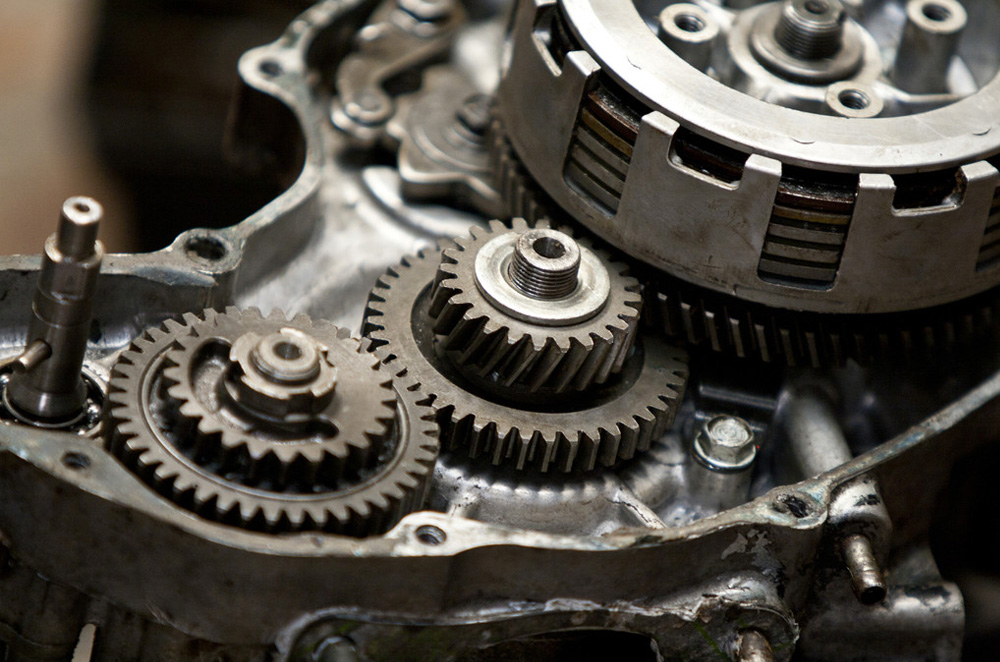Experiencing a seized bike engine can be a nightmare for any rider, leading to costly repairs and potentially ruining the enjoyment of your two-wheeled adventures. But what exactly causes a bike engine to seize?
In this comprehensive guide, we’ll delve into the primary reasons behind engine seizures and provide valuable insights into how you can prevent this dreaded scenario.
What is Engine Seizure?
A bike engine can seize for various reasons, but the primary cause is usually related to inadequate lubrication or overheating. Here are some common reasons why a bike engine might seize.
Before we explore the causes, let’s clarify what engine seizure entails. Simply put, engine seizure occurs when the internal components of the engine lock up or seize due to various factors, rendering the engine inoperable.

This catastrophic event can result in significant damage to the engine and necessitate extensive repairs or even engine replacement.
What is seizing?
Seizing refers to the sudden and involuntary locking or immobilization of a mechanical component or system, typically due to excessive friction, heat, or mechanical failure. When a component seizes, it becomes stuck or unable to move, leading to potential damage or dysfunction within a machine or device.
In the context of a bike engine, seizing occurs when internal components such as pistons, bearings, or crankshafts become locked or frozen due to factors like inadequate lubrication, overheating, or mechanical failure. This can result in catastrophic damage to the engine and may necessitate extensive repairs or replacement.
Seizing can occur in various mechanical systems beyond engines, including machinery, vehicles, and industrial equipment. It is often a result of conditions that cause excessive friction, such as insufficient lubrication, misalignment of parts, or the presence of contaminants.
Proper maintenance, lubrication, and monitoring are essential for preventing seizing and ensuring the smooth operation of mechanical systems.
Common Causes of Bike Engine Seizure…
Lack of Lubrication: Adequate lubrication is vital for reducing friction and preventing metal-to-metal contact within the engine. When the oil level is low or degraded, crucial engine components such as pistons, bearings, and crankshafts may experience excessive friction, leading to overheating and eventual seizure.
Overheating: Excessive heat is another leading cause of engine seizures. Operating the bike at high speeds for prolonged periods or in hot weather conditions can result in overheating.
Additionally, a malfunctioning cooling system or insufficient airflow to the engine can exacerbate the problem, causing critical components to expand beyond their tolerances and seize.
Improper Maintenance: Neglecting routine maintenance tasks, including oil changes, coolant checks, and air filter replacements, can significantly increase the risk of engine seizure. Regular maintenance helps ensure proper lubrication, cooling, and overall engine health, thereby reducing the likelihood of unexpected failures.
Contaminants in the Oil: Dirt, debris, or metal particles present in the engine oil can accelerate wear and tear on internal components, leading to premature failure and potential seizure. It’s essential to use high-quality oil and regularly replace oil filters to minimize the risk of contamination.
Mechanical Failures: Faulty or worn-out engine components, such as piston rings, connecting rods, or bearings. Can cause abnormal friction and stress within the engine, eventually leading to seizure.
Addressing mechanical issues promptly through regular inspections and repairs is crucial for preventing catastrophic failures.
Water Ingress: Water entering the engine, whether through a flooded air intake or a cracked engine block, can cause rust, corrosion, and damage to internal components. Over time, water ingress can weaken critical engine parts, increasing the likelihood of seizure.
Incorrect Fuel Mixture: A lean fuel-air mixture can cause the engine to run hotter than normal. Increasing the risk of overheating and seizure. It’s essential to ensure that the fuel delivery system is properly calibrated and that the air filter is clean to maintain the correct air-fuel ratio.
High RPMs: Running the engine at excessively high RPMs for extended periods can generate excessive heat and stress on internal components. Accelerating wear and increasing the likelihood of seizure.
Avoid prolonged periods of high-speed riding and practice proper gear shifting to keep engine RPMs within safe limits.
Prevention Tips for Avoiding Engine Seizure.
Now that we’ve identified the common causes of bike engine seizure, let’s explore some preventive measures you can take to safeguard your engine:
Regular Maintenance: Follow the manufacturer’s recommended maintenance schedule for oil changes, coolant checks, and other essential tasks. Regular inspections can help identify potential issues before they escalate into major problems.
Use High-Quality Oil: Choose a high-quality, motorcycle-specific oil that meets the manufacturer’s specifications. Regularly check the oil level and top up as needed to ensure proper lubrication.
Monitor Engine Temperature: Keep an eye on the engine temperature gauge and avoid prolonged operation in extreme heat conditions. If the engine starts to overheat, pull over and allow it to cool down before continuing your ride.
Inspect for Contaminants: Regularly inspect the oil and oil filter for signs of contamination, such as metal particles or sludge. If you notice any abnormalities, promptly address the issue to prevent further damage.
Address Mechanical Issues Promptly: If you detect any unusual noises, vibrations, or performance issues. Have your bike inspected by a qualified mechanic. Prompt repairs can prevent minor issues from escalating into major mechanical failures.
Ensure Proper Fueling: Use high-quality fuel and ensure that the fuel delivery system is clean and properly calibrated. Avoid running the engine on a lean fuel-air mixture, as this can increase the risk of overheating and seizure.
Avoid Excessive RPMs: Practice smooth throttle control and avoid unnecessarily high RPMs, especially during extended periods of high-speed riding. Shift gears appropriately to keep engine RPMs within safe limits.
A seized bike engine is a serious and potentially costly problem that every rider hopes to avoid. By understanding the common causes of engine seizure and. Implementing preventive measures such as regular maintenance, proper lubrication, and vigilant monitoring. You can significantly reduce the risk of experiencing this dreaded scenario.
Remember, a well-maintained bike is not only more reliable but also ensures a safer and . More enjoyable riding experience for years to come.


